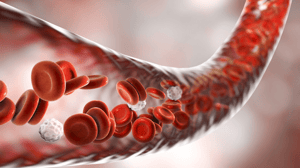The first human trial of a cutting-edge technique that could revolutionise the world of transfusions, even for rarer groups, has taken place in the UK. Another study in Canada delivers life-saving antibiotics via red blood cells for very serious infections.
Red blood cells, the vital blood cells that bind and transport oxygen through the body, may soon be used for something else: carrying life-saving drugs, and becoming miniature factories for other red blood cells from the rarest blood groups, with treatments that eliminate the need for transfusions and blood donations.
Two studies published at the same time explore the potential of these complex cells, which researchers have been trying for many years (without much success) to synthesise in the lab and which now seem to have reached an important turning point.
In the first paper, published in the scientific journal ACS Infectious Diseases, haematologists at McMaster University in Hamilton, Canada, transformed red blood cells into a new version of liposomes - fat particles widely used to transport drugs.
Once they were reduced to little more than wrappers, they were loaded with polymyxin B, an antibiotic thought to be one of the very few for which there is no bacterial resistance, but highly toxic, and therefore administered with extreme caution only in hospitals (and only in conditions where there are no alternatives and the patient's life is at risk). When inserted into the red blood cells, the polymyxin B lets itself be transported to the innermost capillaries of the body and does not damage tissues or organs as it does when unprotected. In this case, the red blood cells 'loaded' with the antibiotic were tested against strains of Escherichia coli, one of the most widespread bacteria in nature, with hundreds of different species, many of which are harmless, but some of which cause various - even potentially fatal - infections. When ‘transported' by the red blood cells, polymyxin B was just as effective as the free form, but without the damaging side effects.
The second experiment
In the second study by the NHS Blood and Transplant (the UK public body that manages organs for transplantation and blood donations) haematologists from the Universities of Cambridge and Bristol performed the first two administrations of lab-produced blood on humans.
The aim of the trial, called RESTORE, was to test whether it was possible to produce blood from lesser-known and rare blood groups, sometimes as rare as one called Bombay, of which there are currently only two bags in the whole of Great Britain.
To do this, researchers used a blood bag from a normal donation. Using a highly advanced technique they then extracted stem cells ready to transform into red blood cells and expanded them in vitro, making them develop into the blood groups required. The process took three weeks and, according to the researchers, there was a very good yield: 50 billion stem cells were obtained from an initial sample of half a million. When these were filtered with a solution to obtain red blood cells at the proper stage of maturity they became 15 billion.
More efficient red blood cells
The first two patients then received a small dose of these red blood cells (no more than 5-10 millilitres) several times, at least four months apart and alternating an infusion of experimental red blood cells with one of normal red blood cells. All the appropriate controls are now being carried out to see how the 'lab-made' red blood cells (marked with radioactive substances normally used in radiology to make them easy to identify) behave. They are expected to be more effective than cells from donations, because natural blood is always a mixture of red blood cells and stem cells at different stages of maturity, while blood produced in the lab is a concentrated solution of red blood cells at optimum efficiency.
Furthermore, if the tests are positive, this blood would also allow people like sickle-cell anaemia patients to undergo fewer transfusions with less blood.
However, there are also limitations. The first is the cost, which is unknown at the moment but nevertheless extremely high. Of course new studies will also be needed on other patients (for the moment British researchers will involve eight in the coming months). This UK study is, however, a breakthrough, because blood substitutes have never been tested on humans previously.




